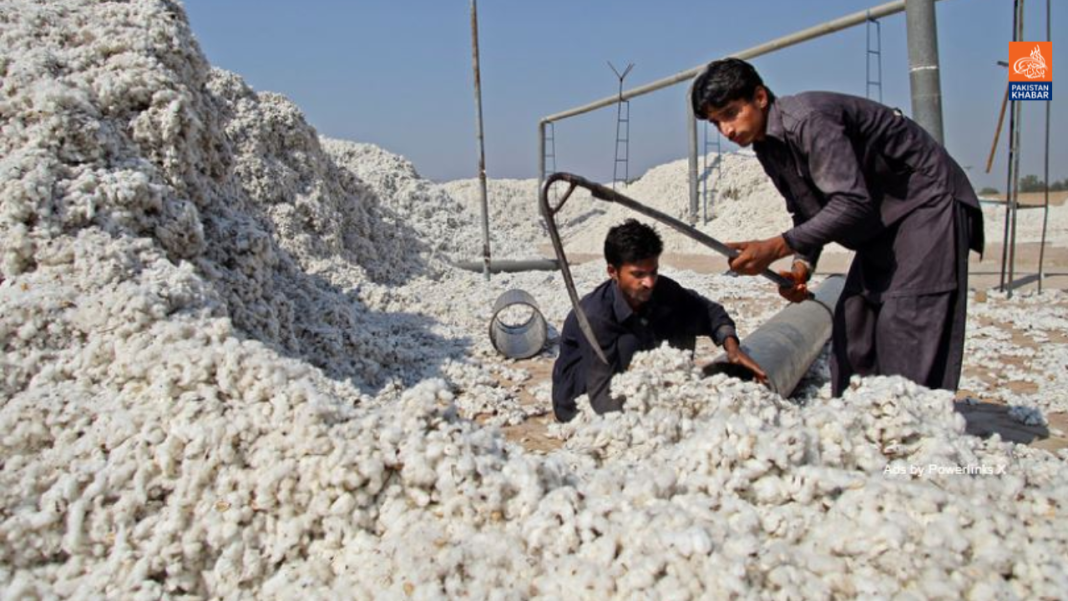A dramatic 60% decrease in cotton production in Punjab and Sindh by August 31 has sparked concerns in the textile industry, which now faces the challenge of sourcing cotton from international markets, depleting valuable foreign exchange reserves.
A discrepancy of over 300,000 bales between figures reported by Punjab’s Crop Reporting Service (CRS) and the Pakistan Cotton Ginners Association (PCGA) has left the industry uncertain about its procurement strategy.
According to PCGA data, approximately 1.226 million bales were delivered to ginning factories by August 31, marking a sharp 60% decline compared to 3.04 million bales during the same period last year.
The drastic reduction in cotton output is attributed to several factors, including reduced early sowing, prolonged heatwaves in June and July causing fruit shedding, heavy rains in August, pest attacks, decreased crop area, the absence of a government intervention price, market manipulation, diminishing crop profitability, and insufficient government support for research and development.
The PCGA report indicates that Sindh has produced 0.773 million bales this year, a 61% drop from last year’s 1.972 million bales. Punjab experienced a 58% decrease, with only 0.453 million bales compared to last year’s 1.068 million bales.
In contrast, Punjab CRS reports 0.759 million bales harvested, which is over 30% less than the previous year’s production.
CRS Director-General Dr. Abdul Qayyum explains that his agency’s production calculations are based on boll size and picking ratios. He notes that the boll weight this season is 3.34 grams, up 1.52% from last year’s 3.29 grams. Cotton has been picked from 46% of the crop area so far, compared to 63% last year.
Sajid Mahmood of the Central Cotton Research Institute attributes the ongoing decline in cotton output and yield since 2016 to insufficient R&D funding for developing climate-resilient crop varieties. He criticizes the lack of support from the textile industry and government for the Pakistan Central Cotton Committee, which has hampered R&D efforts and negatively impacted the textile industry and national economy.
A cotton ginner suggests that some ginning units’ under-invoicing or undocumented business, possibly due to heavy taxes, is a major factor in the unexpected drop in lint production and discrepancies between PCGA and CRS data.
Cotton Ginners Forum Chairman Ihsanul Haq draws a parallel between the PCGA-CRS data variation and the controversy over Forms 45 and 47 from the February 8 general election.
He also notes that recent heavy rains have damaged both the quantity and quality of the crop, leading textile millers to seek lint imports. So far, they have purchased 1.171 million bales compared to 2.615 million bales last year.
Karachi Cotton Brokers Forum Chairman Naseem Usman reports that Pakistani spinners have signed import deals for 1.6 million bales and are negotiating additional agreements due to the shortfall in local cotton production and quality.




